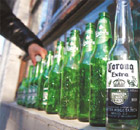Highlights
Noted couple's home saved from bulldozer
By Xu Fan (China Daily)
Updated: 2010-01-08 14:58
 |
Large Medium Small |
State Administration of Cultural Heritage places courtyard house on protection list

The courtyard house of Liang Sicheng and his wife Lin Huiyin, regarded as the greatest couple of Chinese architecture, has been identified as an immovable cultural relic after a five-month battle against demolition.
| ||||
"Liang and Lin spent their most important years in the house. They made a huge contribution to Chinese architectural history and helped protect ancient buildings in cities like Beijing during this period," he said.
Liang's former home is located at No 24 courtyard house in Beizongbu Hutong, Dongcheng district. The famous couple rented and lived in the house from 1931 to 1937.
During the six years, Liang and his wife, with their team of workers, investigated 1,823 ancient constructions in 137 towns and cities around China. They also drew up 1,898 architectural diagrams, according to the Beijing News.
The dinning room in the courtyard house is known as "madam's salon," because many famous intellectuals such as philosopher Jin Yuelin and novelist Shen Congwen spent afternoons with the hostess Lin.
Large-scale demolition of Beizongbu Hutong and three other lanes began in May last year. The notice attached on Liang's house said the local government had decided to demolish it in order to make space for a commercial building.
Local residents were angered by the government warning while the media reported the demolition as "ironic" in July last year.
In November, seven volunteers with He's center applied to the Beijing municipal administration of cultural heritage to list the house as an immovable cultural relic.
Finally, the State Administration of Cultural Heritage announced that the house has been identified in this regard, the Beijing News reported.
"The identification is a result of listening to the voice of the people, and this is very positive," said He.
Yue Shengyang, professor of the college of urban and environmental sciences at Peking University, said former residences of public figures are very important ways to reflect the specific history of a city.
"Famous people usually have more than one house, so it's not reasonable to protect all of them. To preserve or not should depend on whether the construction represents an important period of their life," he said,
"As far as Liang's house in Beizongbu Hutong is concerned, it should be preciously protected for this reason."










